Hello everybody.
Welcome to this post. I hope that all of you will be good and happy and enjoying your precious health with the grace and blessings of Almighty Allah. Today, I am going to participate in the SteemitCryptoAcademy and the topic of discussion for today is Blockchain Forks. So, let's start the discussion without any wastage of time.
.png)
Using your terms to define what is a fork in general?
The blockchain technology has been implemented in all the fields of the daily life due to its impressive features and various benefits. Some of these major features are security, scalability, transparency, blocks verification system, decentralization and many more. These features are due to the pre-existing rules and codes of the respective blockchain. And the changings in these rules and protocols is actually known as Blockchain Forks.
The aim of the developers of any blockchain is to improve the working system of the respective blockchain as much as possible. So, there comes such events or situation when they have to make various changings or modifications in the pre-existing rules and protocols of the blockchain, such events are actually called the Blockchain Forking and the changings are called as Forks in the Blockchain world.

There could be several reasons behind the Blockchain Forking. One of them is to improve the features of the Blockchain as more and precise as possible. Another reason behind the forking of a blockchain is to make the blockchain more friendly and smooth for the users.
Sometimes, there is the need to improve tye security system of the blockchain due to high rate of hacking or other problems for the users, so at those critical conditions, the developers of the blockchain make an agreement with the working nodes of the chain to make various changes to improve the security. These changings could be considered as forks in the blockchain space for the advancement of the security system.
The terms like Soft and Hard forks are used in different cases based on the level and extent of agreement between the developers and the working nodes or security providers of the blockchain. The fork could be in the form of modification in the previously existing rule or protocol and also, it could be in the form of launching a new protocol in the blockchain that is agreed between the developers and nodes.
There are several reasons behind the Blockchain Forking and some of the important ones are discussed below in the form of some points. So, have a look at them.
Blockchain Forming could be happen to improve the security system of a blockchain so that the transactions and data of a blockchain are more secure and safe.
Another reasons is to improve the working or functionalities of various components of the blockchain.
This could also be happen to enhance the scalability of a blockchain by increasing the block size so that more transactions could take place within a second.
It could also happen to solve various problems or bugs that are present in the blockchain and are harmful for the users.
Also, another reason for blockchain forking could be the addition of new and advanced features in a blockchain.
Using any blockchain example, explain what a Hard Fork is.
We have already discussed the Blockchain Forking term in the above section. Now, we will further demonstrate the type of the forking that is Hard Fork. Hard forks are actually those proposed changes that over which the developers and the nodes or stakeholders of the blockchain do not agree between each other. This type of condition becomes a reason of the creation of two separate blockchains or tokens for the parent one.
In simple, hard forking in the blockchain happens when there is a disagreement between the developers and the nodes of a blockchain. Suppose, one of the developer proposed a change and the other developers or nodes are not agreed with his proposal. Then, there could be a change of Hard Forking in the blockchain and a creation of two separate blockchains could happen.
There are many examples of the hard forks in the history of various blockchains including the most popular blockchains Bitcoin and Ethereum. Also, we have recently seen an example of hard fork in the LUNA blockchain. From that incident, my concept about the hard forks is more cleared and improved.
There are several reasons behind these hard forks events. These reasons could be the security, transparency, scalability related proposal of changings. But I am going to discuss some important hard forks in the Bitcoin blockchain that are mostly due to the low scalability of the blockchain. Its TPS is about 3-7 which is too much low as compared to the other popular blockchains. So, have a look.
- Bitcoin XT:
The first hard fork in the Bitcoin blockchain was happened in 2014, when Sir. Mire Hearm proposed a protocol to increase the block size from 1 MB to 8MBs in order to improve the scalability of the chain. Many of the miners and developer teams rejected the proposal. Hence, this lead in the creation of a separate blockchain that is known as Bitcoin XT which has no existence now because it was rejected by many miners later on.
- Bitcoin Classic:
The second hard form in the Bitcoin blockchain was happened in 2016 when the proposal of the changing the block size of the block from 1 MB to 2 MBs was rejected by some of the miners and developers. This lead to a separate blockchain that known as Bitcoin Classic and now very popular in the crypto space.
- Bitcoin Cash:
In 2017, the third hard fork in the Bitcoin blockchain was happened when the proposal of increasing the blocks size from 1 MB to 8MBs without Sagwit was rejected. This lead to a very successful blockchain of the time that is known as Bitcoin Cash and is present in the trending coins of the crypto space.
Using any blockchain example, explain what a Soft Fork is.
The second example of the blockchain forks is the Soft Fork. It is a type of blockchain forking in which there is no creation of a separate blockchain as in the hard fork. But the proposed changings are accepted by majority of the developers and nodes or stakeholders. But the others who rejected the proposal are still able to contact those who accepted it.
The Soft Fork could be the modification in the previously existing protocol or rule that is more effective and better than the previous one. Also, it could be a new protocol that is implemented in the blockchain after the verification of majority of the stakeholders or nodes. In simple words, we can say that it is an update that we mostly experience in different technology devices or any software.
If we take a general example of the Soft Fork, let's consider a blockchain whose block size is 5MB and there is a proposal to reduce the block size to improve the scalability. So, the reduction in the block size is not a matter of disagreement between the miners as they are still able to verify the transactions in the network. This type of upgrade or changing is actually the Soft Fork.
If we look into the history of crypto, there is a well known example of Soft Fork that id actually the Segregated Witness (Segwit) that was proposed in 2015 and successfully implemented in 2017. According to this update, the signature of the witnesses are not included in the block to provide more capacity for more and more transaction data and hence the scalability is increased. This is a successful example of Soft Fork in the blockchain technology.
What are the differences between Hard Forks and Soft Forks?
As we have already discussed about the Hard forks and Soft forks with great details in the above sections. So, now I will discuss some differences between these two types of Blockchain Forks in the form of points as follow.
The major difference between these two types is that there occurs the creation of two new blockchains in the hard fork. But in the soft fork, the chain remains the same but a few changings are made.
In hard fork, the nodes of the postfork chain are not in contact with the prefork nodes. While in the soft fork, the nodes can contact with each other easily.
Hard fork is the result of the maximum or complete change in the operating system of a chain. While the soft fork is the result of the minimum changing in the protocols of the chain.
The previous all transactions are considered as invalid after the hard fork. While on the other hand, this doesn't happen.
For hard fork, all the agreed nodes have to upgrade for the new protocol while in the soft works, only the upgradation of majority of nodes is necessary for its success.
The soft fork could be changed into a hard fork if it does not remain effective foe a long time. While a hard fork cannot be changed into a soft fork again.
In hard fork, totally different blockchains are formed that operate separately. While in the soft fork, no different blockchain are formed as a result of forking.
Explain the Steem and Hive Hard fork by showing the similarities/differences in their Genesis blocks.
Almost all of us know that separate Steemit and Hive blockchains are actually a result of a hard fork that was happened in the Steemit blockchain. Let's have a look at a brief history of this hard fork. We know that the Steemit blockchain was launched in 2016 as a decentralised platform that reward its users for creating quality content on the platform.
On 20 March 2020, a hard fork is happened due to the disagreement between the nodes and developers of the platform during the integration of the Tron ecosystem in the Steemit blockchain. This hard fork results in a new separate blockchain, Hive that rewards its users in the form of native token, HIVE and the governance token, HBD. Let's have a look at the similarities and dissimilarities in the blocks of these blockchains.
To see the similarities in these two blockchains, let's first take a look at the genesis block, the first ever block that is validated on the blockchain.
- Form, Block Explorer of the SteemWorld.Org, I have searched the Block No. 1 and the following information are noted there.
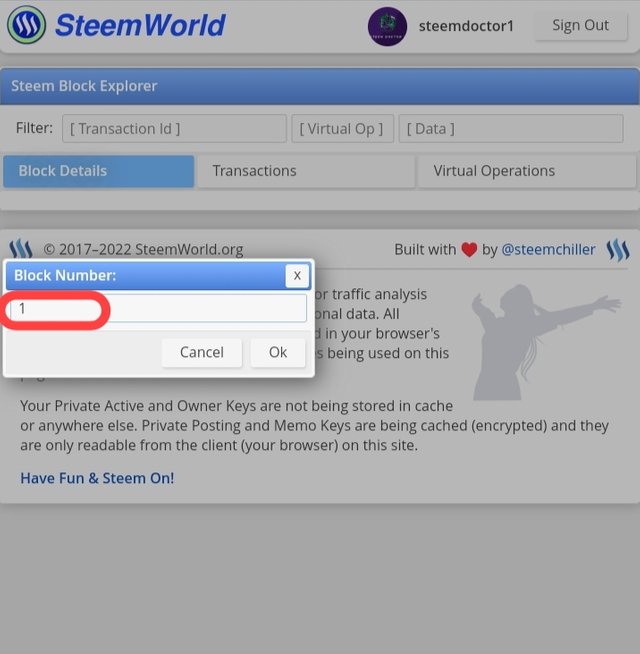
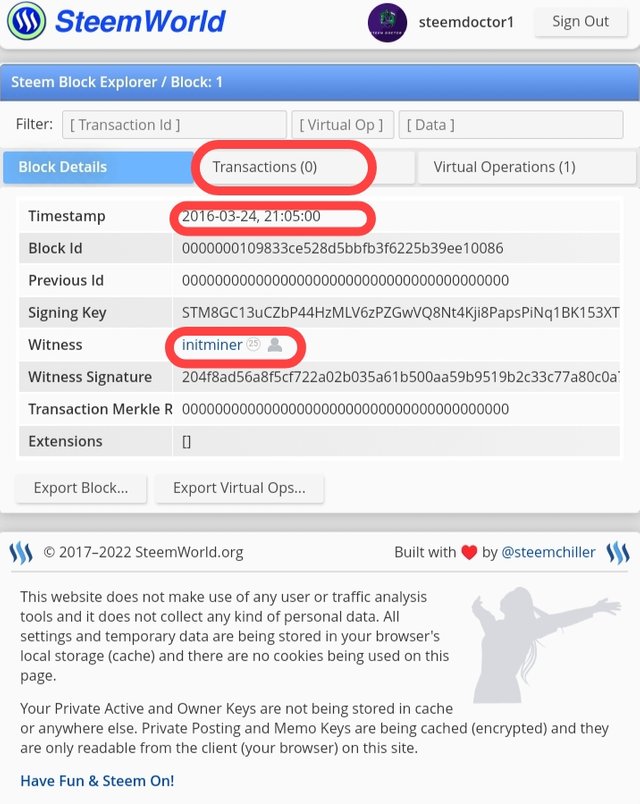
Now, we will look for the Genesis Block (Block 1) of the Hive platform.
- For this purpose, open the HiveBlocks, and searched for the Block No. 1 and the following information are noted there.
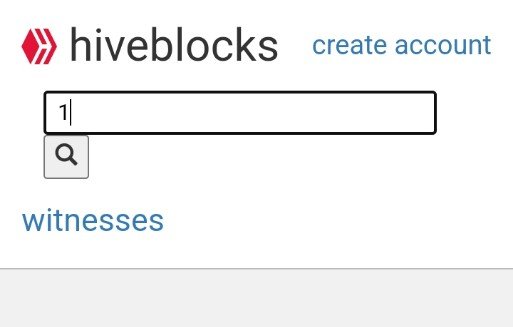
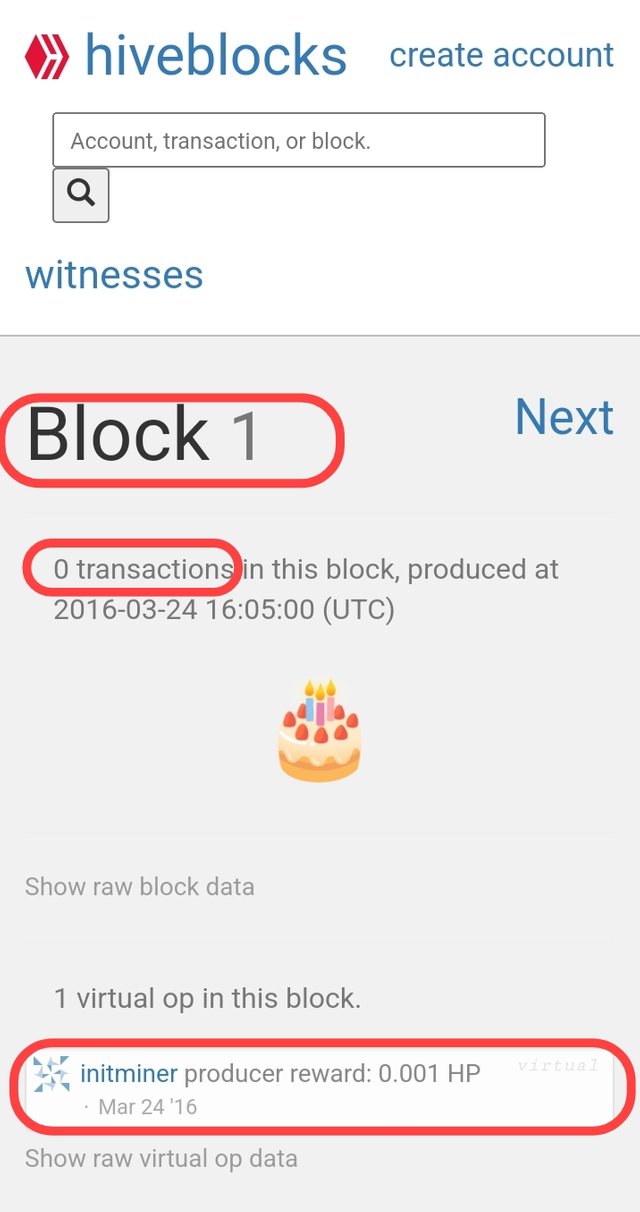
From above, we can conclude that the Genesis Block of both the blockchains is exactly same. The time stamp 2016-03-24, 21:05:00, Witness is initminer on both sides. Also, the transactions in the genesis blocks of both platforms are also 0 transactions.
The only difference in the Genesis Block of both the platforms is block reward that is 1 SP in the case of Steemit while 0.001 HP in the case of the Hive blockchain. So, it is avery minor difference as compared to the similarities between them.
To consider the difference between the blocks of the both platforms, let's have a look at the information gathered by checking the Block No. 61000000 of the both of the blockchains.
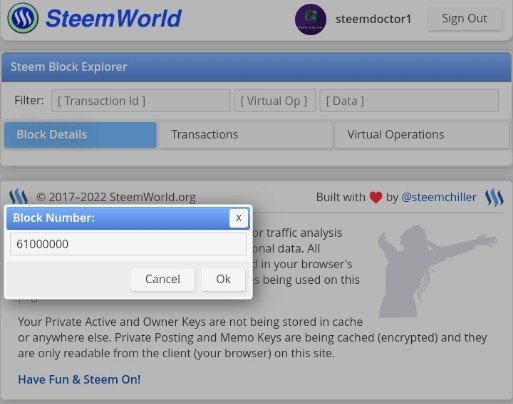
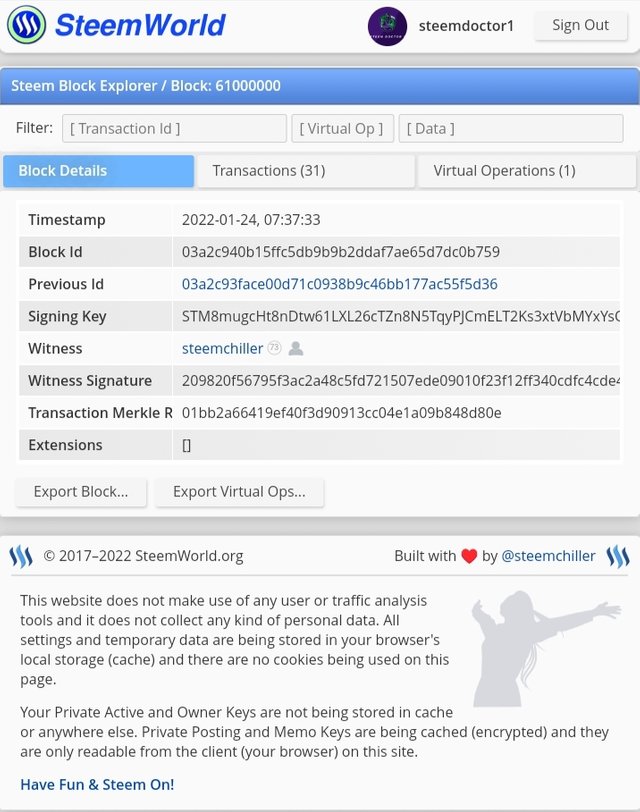
Now, have a look on the same block number of the Hive blockchain.
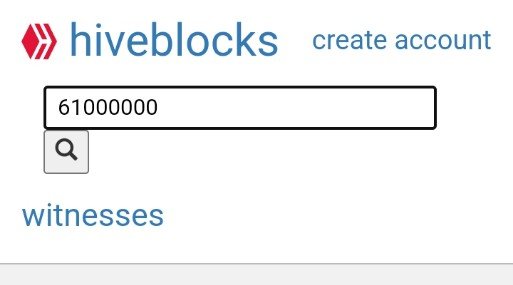
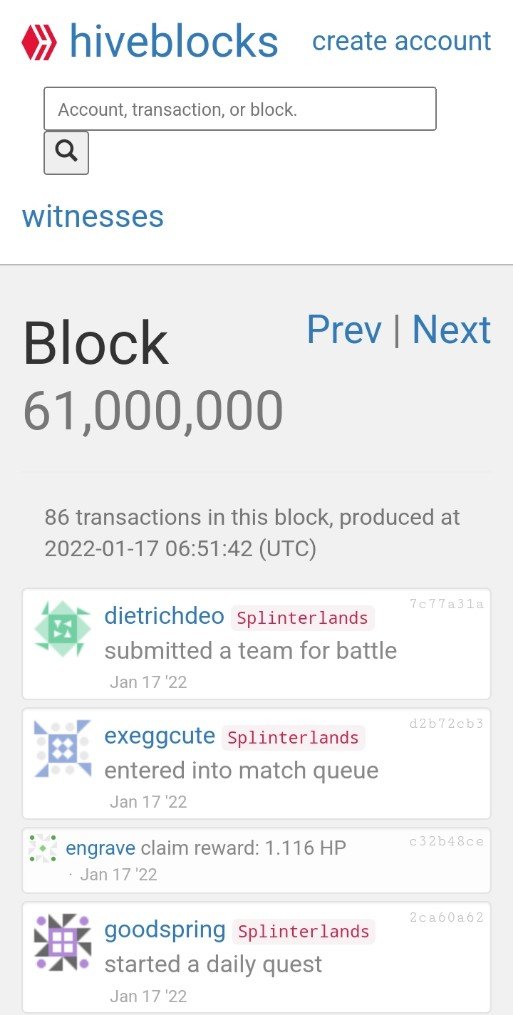
You can see that there are many differences in the same number of the block. The block on Steem was by @steemchiller and has 31 transactions and mined on January 24, 2022 while the block on Hive has 86 transactions, and was mined on January 17, 2022. So, we have seen that these blockchains have different block details and nodes after the hard fork.
Conclusions
The changing in the rules or codes of the blockchain to improve the working or functionalities of the blockchain. These changings are called blockchain forks and the process is known as Blockchain Forking.
Hard Forks are actually the source of the creation of two separate blockchains from the one parent chain while the Soft Forks are just like the advanced and new featured updates in the blockchain.
I would like to invite my friends @malikusman1, @chant, and @alihussain07 to take part in this amazing contest.
Writer: @steemdoctor1

Security reasons are one of the reasons why a fork happens in the blockchain, to make the blockchain's security tighter and for block correction after some misalignment. Also, to add more functionalities.
You listed some hard forks that I am also familiar with through my research and that of SegWit in terms of soft forks to make the Bitcoin blockchain more scalable.
The genesis blockchain of Steem and Hive are the same because they are from the same origin and that's how hard fork works.
Downvoting a post can decrease pending rewards and make it less visible. Common reasons:
Submit
#letscomment😃
Curated By - @chiabertrand
Curation Team - Team 3
Downvoting a post can decrease pending rewards and make it less visible. Common reasons:
Submit
Thank you very much for your valuable addition here.
Downvoting a post can decrease pending rewards and make it less visible. Common reasons:
Submit
Excellent piece of work from your side brother in which you explain about the blockchain fork. In now a days Blockchain technology is spreading in almost all the working section. You have explained about the hard fork and soft fork and also difference between the hard fork and soft fork and also about steem and hive fork. Good luck to you for the contest
Downvoting a post can decrease pending rewards and make it less visible. Common reasons:
Submit
Thank you so much bro for your precious comment here.
Downvoting a post can decrease pending rewards and make it less visible. Common reasons:
Submit
Curated By - @chiabertrand
Curation Team - Team 3
Downvoting a post can decrease pending rewards and make it less visible. Common reasons:
Submit
Hello friend
Yeah this is right friend, it could help Blockchain produce awesome security skills to help, it was used to revers stolen asset from a Blockchain to it's real owners.
Thank you very much for sharing, please you can check my own entry here
wishing you success
Downvoting a post can decrease pending rewards and make it less visible. Common reasons:
Submit
Thank you very much for your precious comment here.
Downvoting a post can decrease pending rewards and make it less visible. Common reasons:
Submit
Very detailed post about Forking.
You explain in simple language and neat.
For adding changing regarding present needs and improving scalability,security in general forking happened in Blockchain.
Nice Entry from you. Best of luck my friend.
Downvoting a post can decrease pending rewards and make it less visible. Common reasons:
Submit
Thank you for your precious comment.
Downvoting a post can decrease pending rewards and make it less visible. Common reasons:
Submit